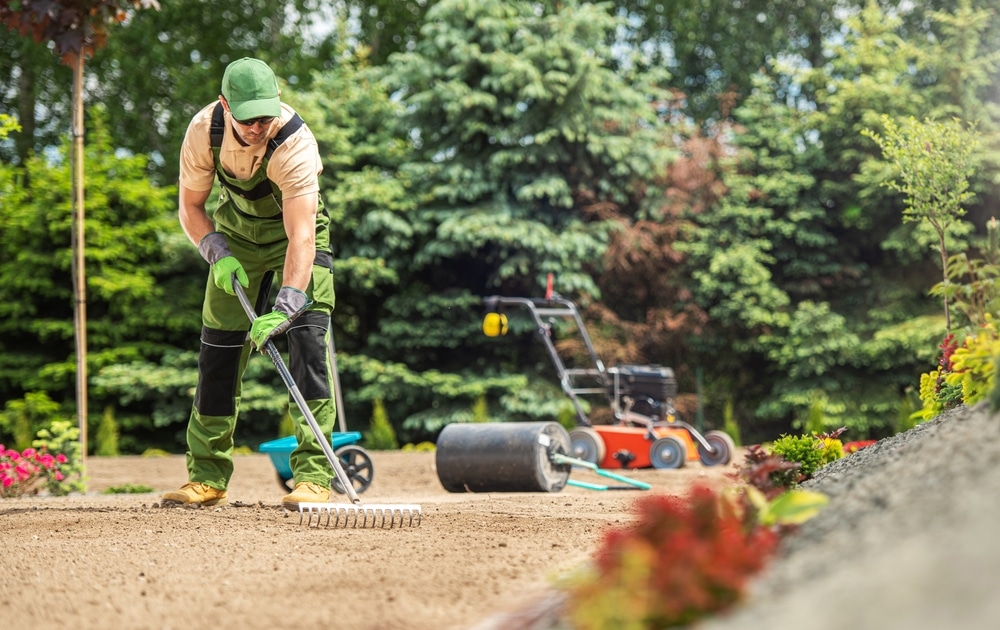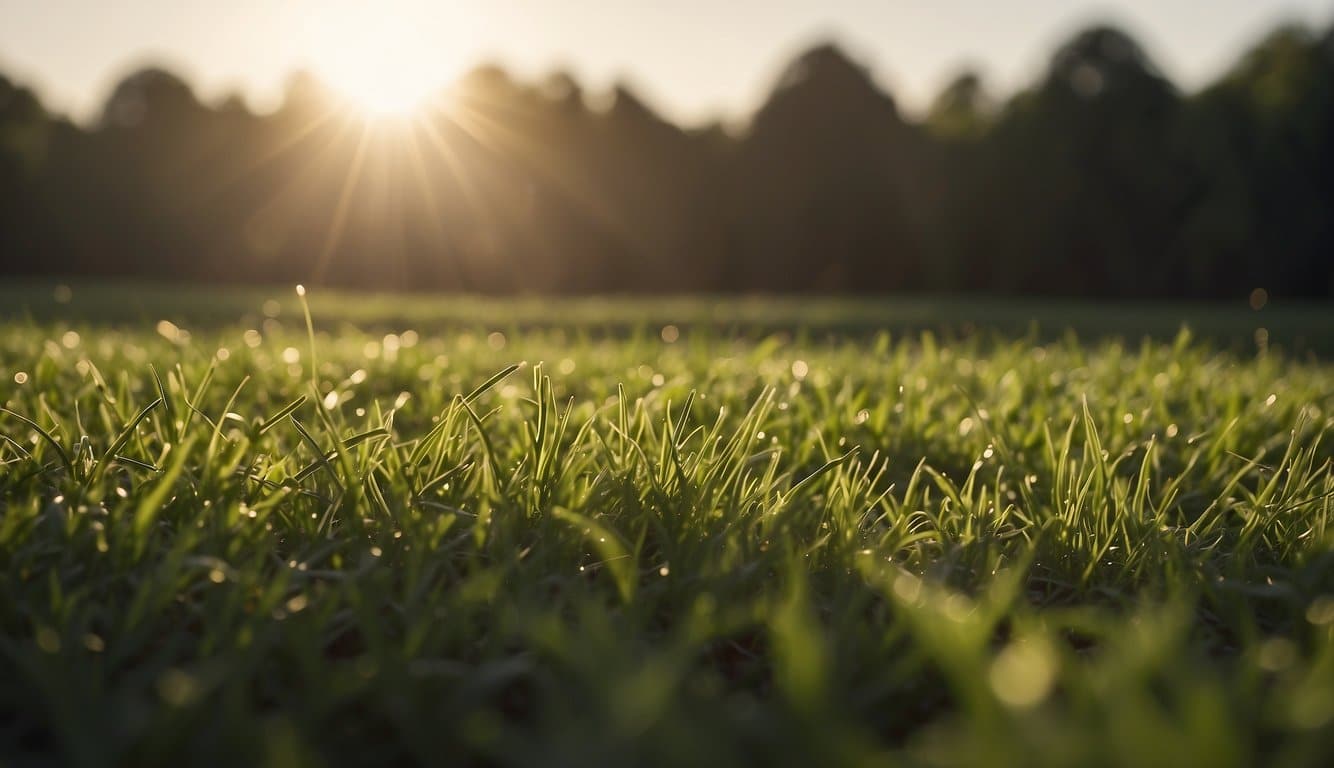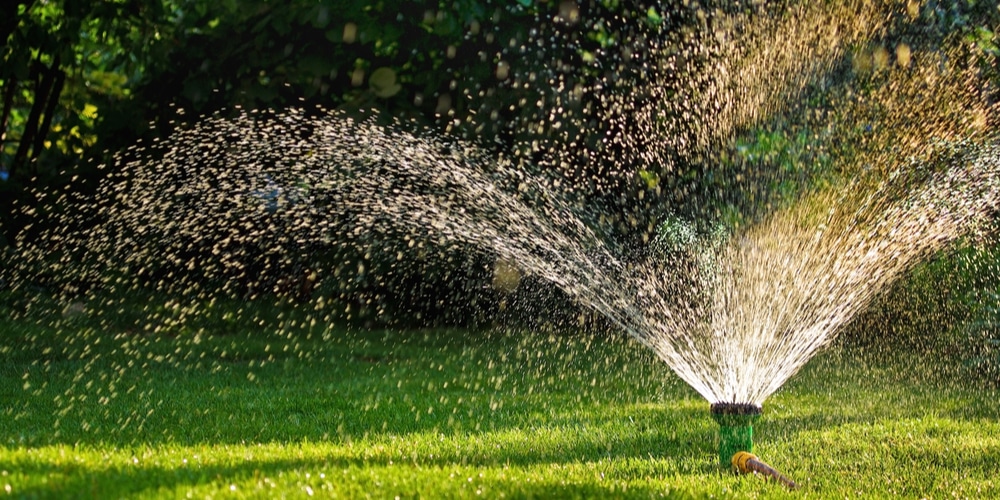Grass Seed Fundamentals
To establish a thriving lawn, it’s crucial to start with a firm grasp of grass seed basics.
The type of seed you choose and the timing of your planting directly influence the success of your lawn.
Choosing the Right Seed for Your Climate
- Research: Evaluate your region’s climate, including the temperature range and humidity levels.
- Research: Various grass species are adapted to different climates. For instance, cool-season grasses flourish in Northern regions while warm-season grasses thrive in Southern areas.
- Resilience: Consider selecting grass seeds that are resilient to your local environmental stresses such as drought, shade, or high traffic.
- Resilience: Seeds like Kentucky bluegrass or Bermuda grass may suit different needs.
Determining the Best Planting Season
- Timing: To ensure the best germination rates, plant cool-season grass seed in early fall or early spring. Meanwhile, warm-season seeds should be sowed in late spring or early summer, when soil temperatures are optimal.
- Regional factors: Local climate variations, like an extended cold snap or rainy season, can also affect the best time to plant.
- Regional factors: Be mindful of these conditions and adjust your planting schedule accordingly.
Preparing the Soil for Seeding
Proper soil preparation is the bedrock of a lush, vibrant lawn.
Precise steps in testing soil quality, removing debris, and improving soil structure can prevent common seeding mistakes.
Testing Soil Quality
- Conduct a Soil Test: Determine the pH level of your soil. Most grasses prefer a slightly acidic to neutral pH, generally between 6.0 and 7.0.
- Conduct a Soil Test: If your pH is off, you’ll need to amend the soil accordingly.
- Nutrient Assessment: The soil test also indicates nutrient deficiencies. Adjust with the recommended fertilizers to ensure your grass seed has the nutrients it needs to grow.
Removing Weeds and Debris
- Clear the Area: Rake and remove debris such as sticks, stones, and existing vegetation that can impede seed growth.
- Weed-Out Complications: Ensure all weeds are removed, including the roots, to prevent future competition for resources.
Improving Soil Structure
- Aerate Compacted Soil: If your soil is tightly packed, it needs aerating. This encourages deeper root growth and improves water infiltration.
- Organic Matter: Incorporate organic material into the soil. Compost or aged manure can drastically improve soil structure and nutrient content.
- Proper Tillage: For optimal seedbed preparation, till the soil to a depth of 4-6 inches, which can help roots establish more easily.
Seeding Techniques
Proper seeding techniques are critical for establishing a healthy and dense lawn. Mastery of seed distribution and planting depth can dramatically increase your grass seed germination success rate.
Sowing Seeds Evenly
- Measure Your Area: Before you begin, calculate the square footage of your lawn to determine the amount of seed required.
- Choose the Right Tool: Use a broadcast spreader for large areas or a handheld spreader for smaller patches to ensure uniform coverage.
- Application Pattern: Walk in straight, overlapping lines while releasing seeds to avoid bare spots.
Depth of Seed Placement
- Soil Contact: Seeds need good soil contact; press them lightly into the soil using a roller or by walking over the seeded area.
- Correct Depth: Aim for a seed placement of about 1/8 to 1/4 inch deep. Seeds planted too deeply may fail to receive adequate light and moisture to germinate.
- Instructions, like those found on The Spruce, recommend a light raking to cover the seeds with soil without burying them too deep.
Post-Planting Care
After planting your grass seed, your job is not over. Proper post-planting care is crucial for strong growth and development. Below are specific actions you need to take to ensure your new lawn flourishes.
Watering Appropriately
- Frequency and Amount: Water your new lawn lightly but frequently.
- First Week: Water once or twice a day, ensuring the soil doesn’t dry out.
- Subsequent Weeks: Gradually reduce watering frequency to encourage deeper root growth.
- Best Times to Water: Aim to water your lawn early in the morning or late in the evening to reduce evaporation loss.
Fertilization and Nutrient Management
- Initial Feeding: Apply a starter fertilizer at the time of seeding to give your grass a nutritional boost.
- Initial Feeding: Look for fertilizers that have balanced nutrients, especially phosphorus, since it is essential for root development.
- Soil Testing: Prior to fertilizing, consider testing your soil to determine the exact nutrient needs of your lawn.
- Follow-up Fertilization: Your lawn will need more feeding as it grows.
- 4-8 Weeks Post Germination: Apply another round of fertilizer to sustain growth.
- Seasonal Fertilization: Continuously assess and apply appropriate fertilizer based on seasonal needs and grass type.
Common Pitfalls and Troubleshooting
Overcoming issues with grass seed planting requires attention to detail in every step of the process. The correct seed choice, suitable soil conditions, and appropriate care are necessary to avoid common mistakes that lead to a less than ideal lawn.
Dealing with Patchy Growth
- Soil Preparation: Ensure your soil is properly prepared; it should be loose, not compacted, to allow root growth.
- Soil Preparation: Conduct a soil test for pH levels and adjust accordingly, aiming for a pH between 6 and 7.5. Amendments like lime may be needed to balance pH levels.
- Seed-to-Soil Contact: Seeds need good contact with the soil to germinate effectively.
- Seed-to-Soil Contact: Gently rake the area after sowing to cover seeds with a thin layer of soil, or use a roller to press them down.
- Watering Practices: Water the seeded area lightly but regularly to keep the soil consistently moist, not soaked.
- Watering Practices: Overwatering can cause seeds to rot, while under-watering may dehydrate them.
- Fertilization: Apply the right fertilizer for your specific grass type.
- Fertilization: Avoid weed-and-feed products initially, as they can harm new grass seedlings.
Preventing Birds and Pests
- Netting: Cover the seeded area with a fine mesh netting to deter birds.
- Netting: Secure the edges to prevent birds from getting under it.
- Visual Deterrents: Use visual aids like reflective tapes, decoy predators, or old CDs to scare away birds and small pests. Place them around the planted area.
- Seed Choice: Choosing coated seeds can be beneficial as they are often less attractive to birds and can provide better moisture retention for improved germination.
- Proper Seeding Time: Sow your seeds during the right season to encourage faster growth, lessening the time window for pests to cause damage.
- Proper Seeding Time: Avoid peak summer months as recommended by Curbwise, and aim for early spring or fall.
Frequently Asked Questions
The right techniques and timing are crucial for a lush, vibrant lawn. Here’s what you need to know to avoid common grass planting pitfalls.
What are the consequences of over-seeding a lawn and how can it be prevented?
Over-seeding can lead to excessive competition for resources, resulting in weak grass establishment.
Avoid this by following the overseeding coverage instructions on your seed package or consulting with a lawn care expert.
How long should one wait to seed after applying fertilizer, and what are the best practices?
The waiting period after fertilizing before seeding depends on the type of fertilizer used. For best practices, consult the fertilizer label and allow the recommended time frame to ensure that the nutrients will effectively support new seed growth.
What is the proper amount of grass seed needed per square foot when seeding a lawn?
Proper seeding rates vary, but a general guide is approximately 2 to 3 pounds of grass seed per 1000 square feet for new lawns. Measure your lawn to purchase the correct amount of seed.
In what season is it most suitable to plant grass seed in regions with similar climates to Arkansas?
The ideal time to plant grass seed in regions like Arkansas is in early fall. This season provides warm soil and cooler air temperatures, which are conducive to seed germination and strong root development.
What are the recommended methods for spreading grass seed evenly?
For even distribution of grass seed, use a seed spreader, and follow the recommended overseeding rates. This ensures even growth and helps prevent bare spots or clumping.
Which common practices should be avoided to ensure successful grass seed germination?
Common missteps hindering germination include:
- Ignoring soil pH levels; most grass types prefer a slightly acidic to neutral pH (6.5-7).
- Allowing the soil to dry out; keep the seedbed moist but not waterlogged.
Avoid these by testing your soil pH and watering appropriately.
Last update on 2024-04-29 / Affiliate links / Images from Amazon Product Advertising API






